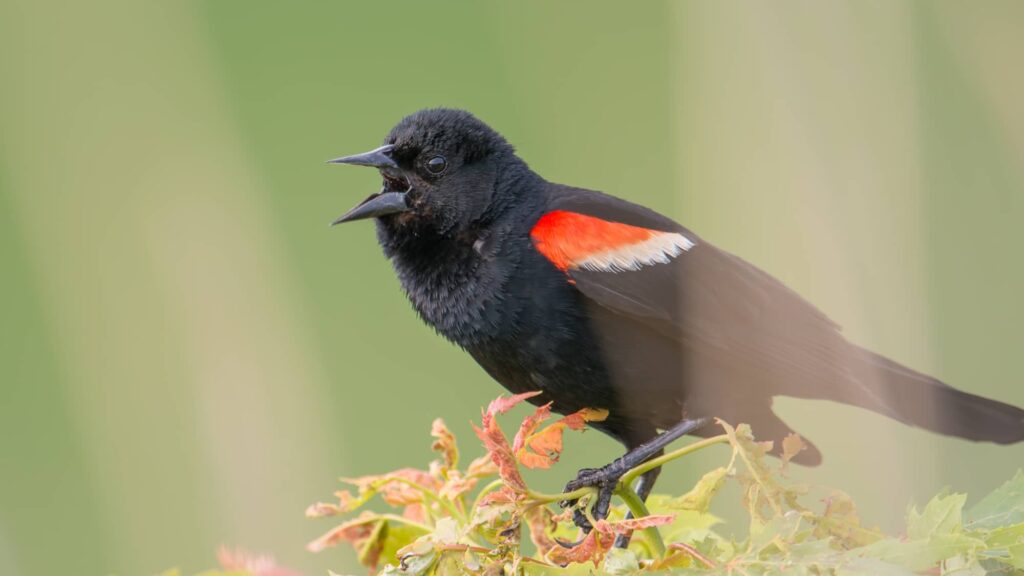Since its declaration as a state in 1803, Ohio has been giving the world many things to talk about. For starters, it’s the birthplace of Neil Armstrong, who’s the first person to step on the moon. Plus, Akron is the rubber capital of the world.
But we’re not here to talk about Armstrong, and we’re not talking about rubber. Instead, we’ll explore the colorful species of birds in Ohio.
Forestlands occupy around 30% of Ohio’s land, and the state comprises more than 40,000 miles of waterways. So it’s no wonder the state is home to 427 types of birds. Some of them breed in the state, and others are occasional visitors.
Here’s a list of 26 birds in Ohio, classified into colors to make matters easier for you.
Red Birds in Ohio
Summer Tanager
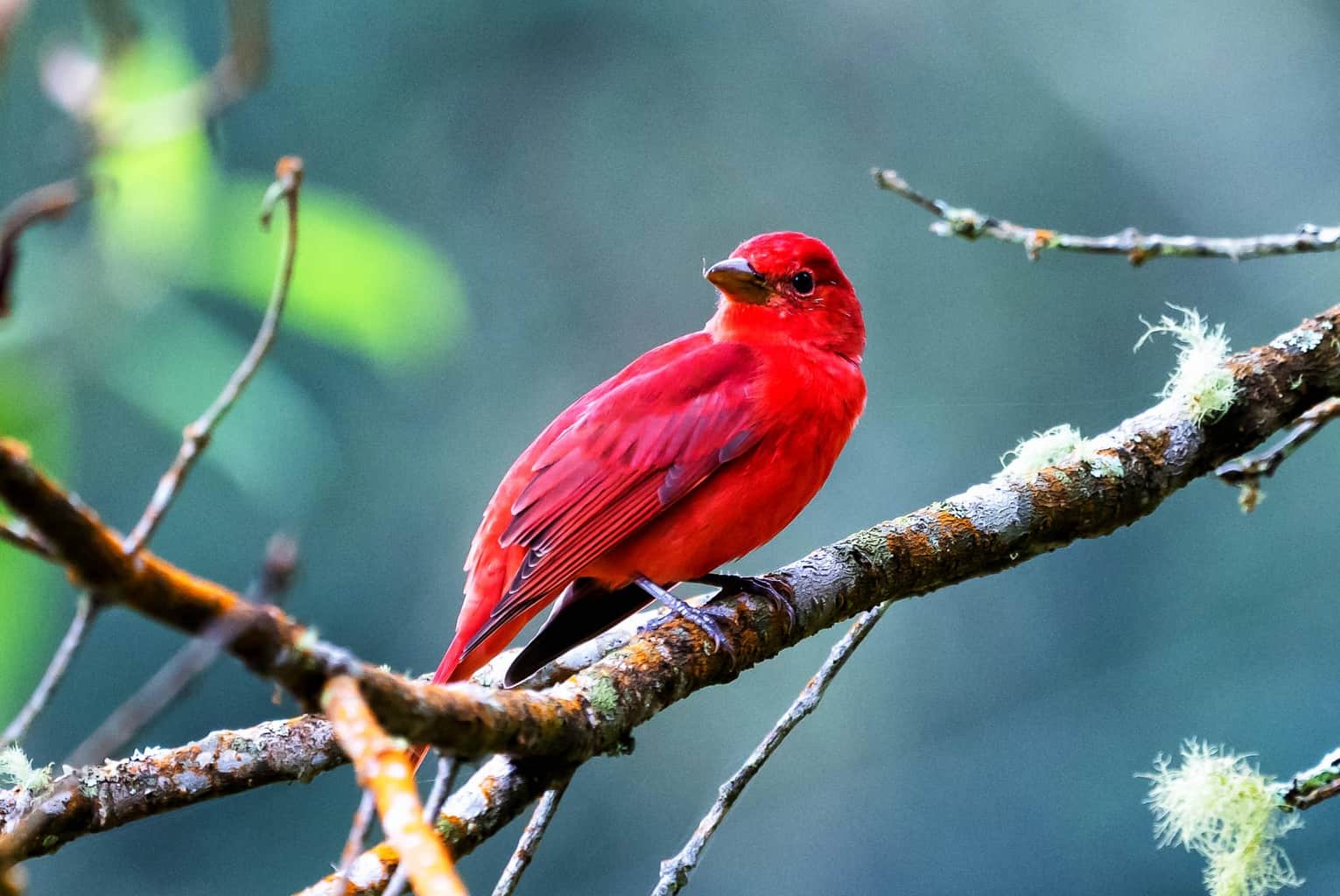
- Scientific Name: Piranga rubra
- Length: 6.7–7 inches
- Weight: 1.1–1.5 ounces
- Wingspan: 11–12 inches
Summer tanagers are probably the reddest birds you’ll see in the United States and probably in your lifetime. They have bright red bodies, making them easily identifiable from a distance.
Although Northern cardinals are bright red too, they’re no match for Summer tanagers.
Part of this bird’s breeding range is in the Northern region of Ohio. You can see them frequently in the summer when they stay in the state without moving territories.
Summer tanagers mostly stay around oak-hickory woodland. They’re a bit shy, so don’t expect them at your bird feeder.
Northern Cardinal

- Scientific Name: Cardinalis cardinalis
- Length: 8.3–9.1 inches
- Weight: 1.5–1.7 ounces
- Wingspan: 9.8–12.2 inches
The Cardinal is Ohio’s state bird and a year-round resident. The Northern cardinal is also one of its most common backyard birds. In fact, the red bird is a common backyard bird in most states, so there’s a high chance you already encountered it a couple of times in your lifetime.
Northern cardinals have thick bills and chunky red bodies with white spots on the wings. The females have the same plumage but in duller colors. They spend most of their time on tree branches, but they also like to get close to the ground.
You’ll probably find them foraging on the ground with their thick bills, trying to pull a worm out. Along with insects, they feed on suet, seeds, and fruits.
Red-Bellied Woodpecker
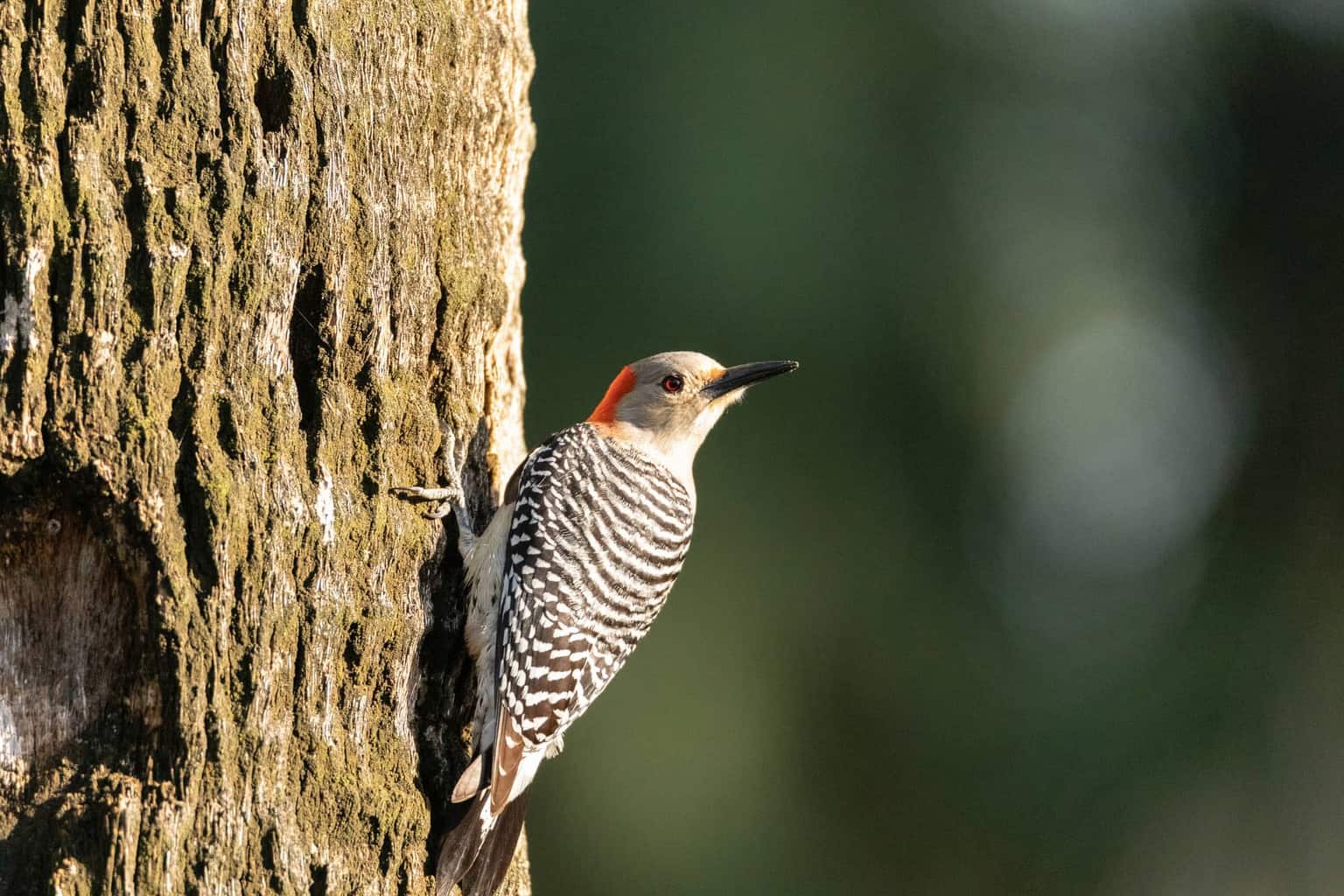
- Scientific Name: Melanerpes carolinus
- Length: 9.4 inches
- Weight: 2–3.2 ounces
- Wingspan: 13–16.5 inches
Red-bellied woodpeckers are black and white, but they have a patch of red on the top of their heads. They’re called “red-bellied” because their bellies tend to blush into a deep red, like the patch on their heads.
These familiar birds don’t have crests, unlike most woodpeckers. So, it should be easy enough to identify them. They’re also more common in the US than most woodpecker species.
Red-bellied woodpeckers may visit your backyard if you provide peanuts or sunflower seeds. Other than that, you’ll find them near woodlands and old tree trunks.
Red-Winged Blackbird
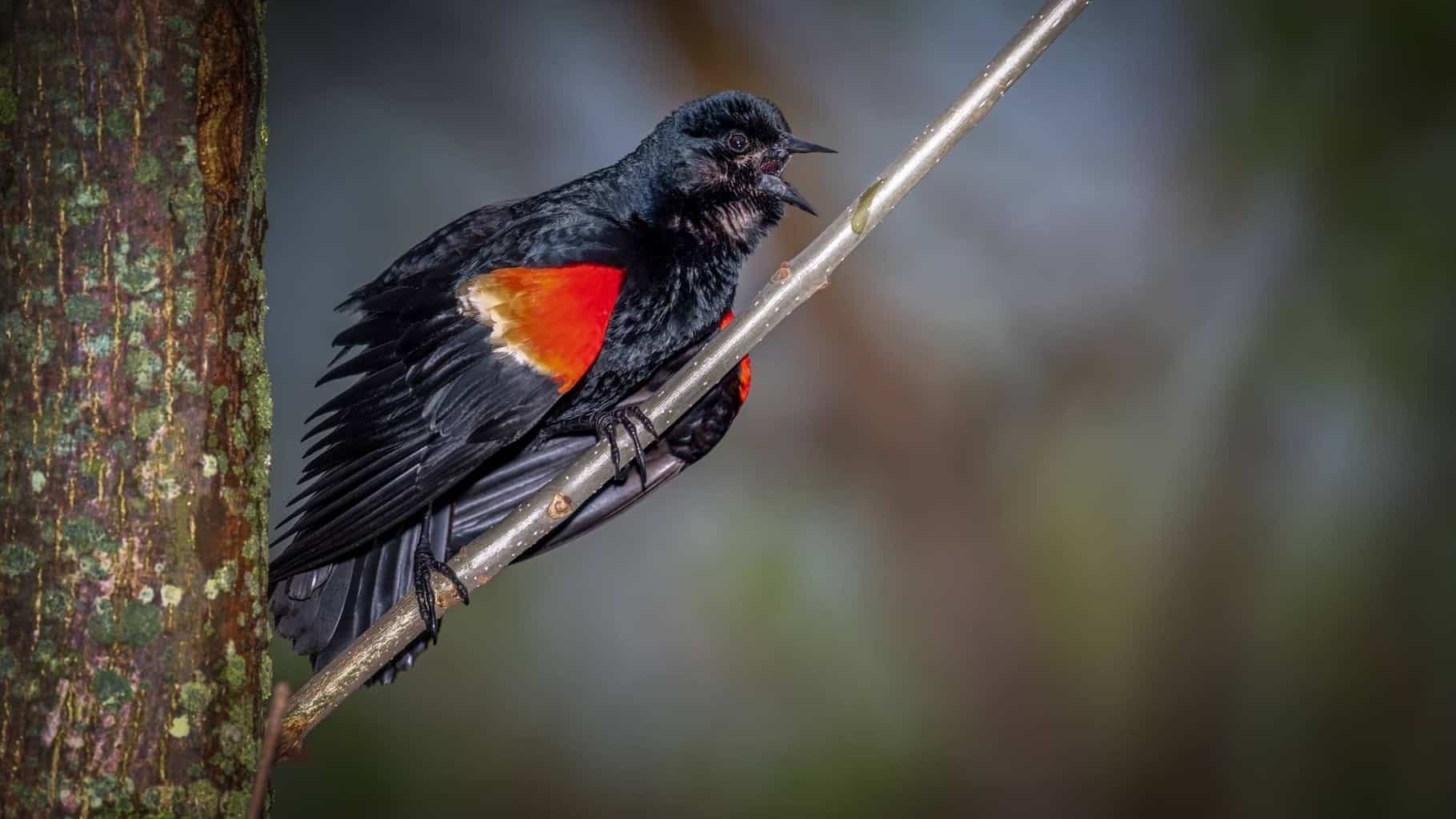
- Scientific Name: Agelaius phoeniceus
- Length: 9–10 inches
- Weight: 2.5–3 ounces
- Wingspan: 12–16 inches
Red-winged blackbirds have red caps on their shoulders, making their beautiful plumage look like army uniforms with a rank ornament.
They have black bodies, so the red shoulder caps stand out in a powerful contrast. You’ll be able to identify these birds a mile away, thanks to their unique coloration.
In the summer, red-winged blackbirds live near marshes and waterways, which are plentiful in Ohio. When the weather gets colder, they move to pastures and meadows.
These birds are avid singers, and they like to make their presence known. Bird watchers won’t have any trouble trying to find them.
Red-Headed Woodpecker
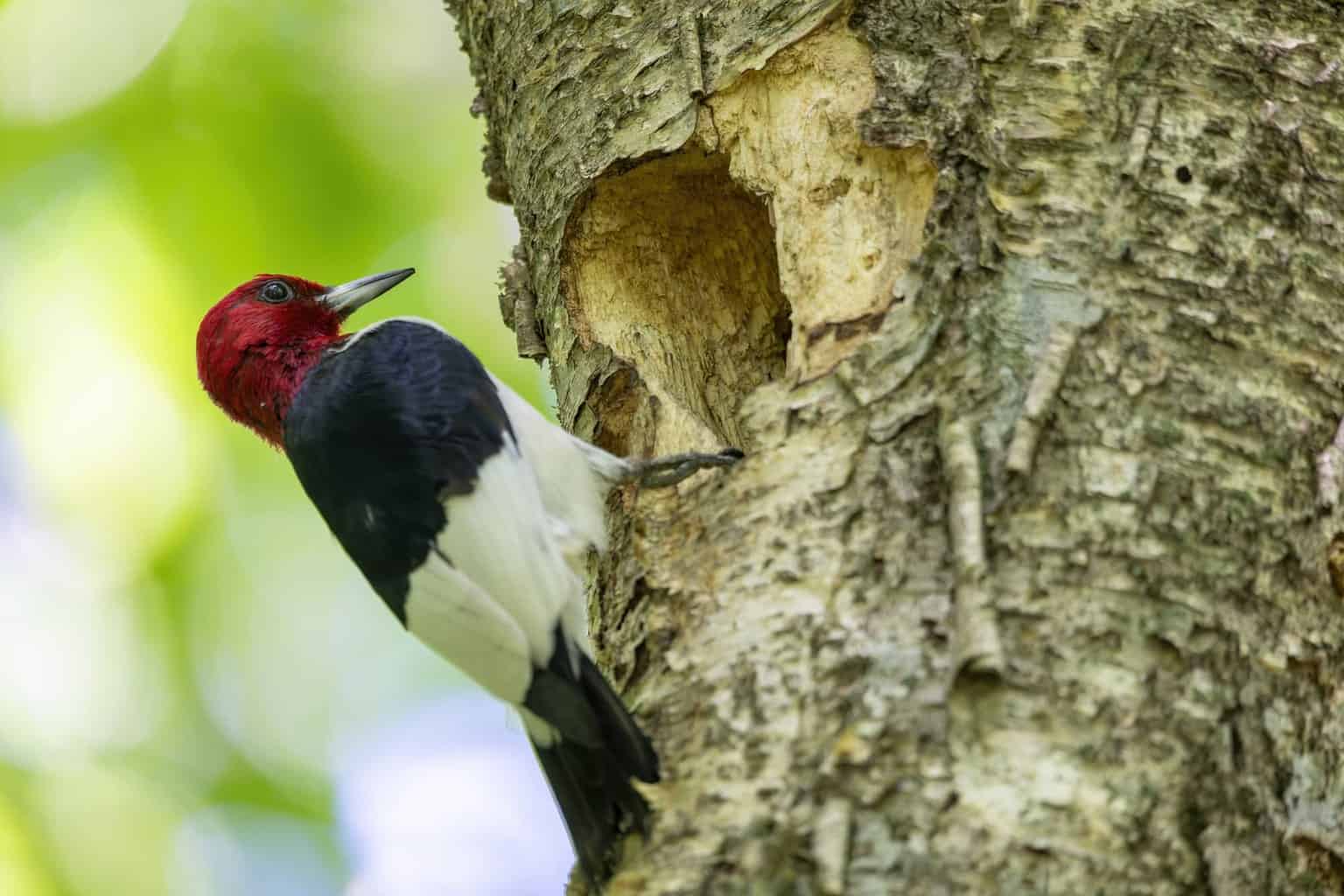
- Scientific Name: Melanerpes erythrocephalus
- Length: 7.5–9.1 inches
- Weight: 2–3.2 ounces
- Wingspan: 16.5 inches
Like red-bellied woodpeckers, red-headed ones have red heads. However, red-headed woodpeckers have entirely red heads instead of a small patch on the top.
The rest of their bodies are covered in white and black patches, making the red head their easiest feature to identify.
These birds prefer to stay in open habitats, so you’ll frequently find them in woodlands, parks, meadows, and similar places.
They may visit your backyard feeder if you provide seeds, fruits, and nuts. If you have a platform feeder, you have a higher chance of attracting a red-headed woodpecker.
Blue Birds in Ohio
Cerulean Warbler
- Scientific Name: Setophaga cerulea
- Length: 4.3–4.5 inches
- Weight: about 0.3 ounces
- Wingspan: 7.9–8.5 inches
Cerulean warblers are among the most common birds in Ohio. They have pale blue bodies with streaks of white and a darker shade of blue all over.
You’ll find these birds in large numbers in Southern harbors, riparian areas, and dense forests. They’re small, and they look like most bluebirds on this list. So, identifying them may not be a piece of cake.
If you want to catch cerulean warblers, you can visit Lake Hope State Park or Shawnee State Forest. These are considered hot spots for these small bluebirds.
Indigo Bunting
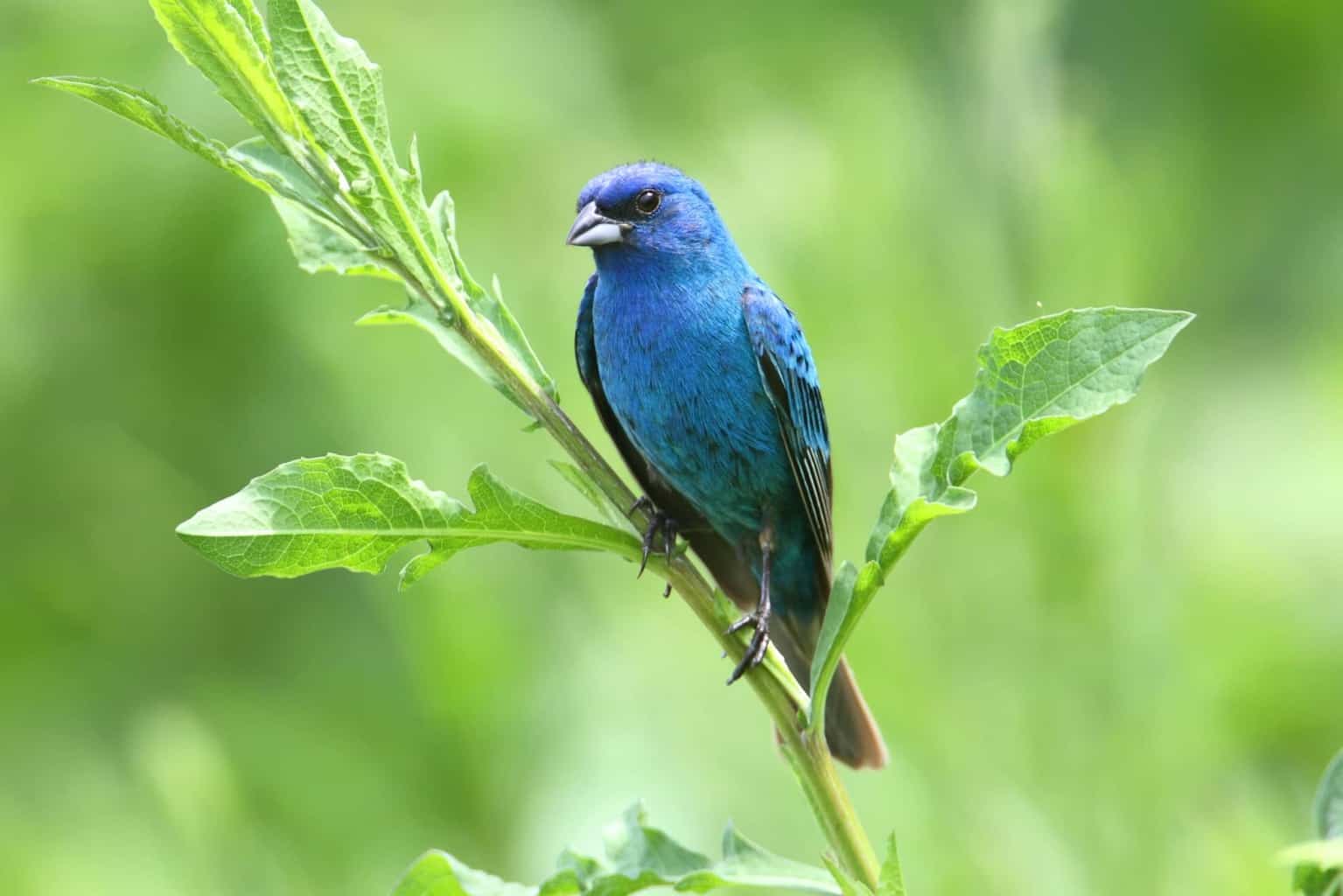
- Scientific Name: Passerina cyanea
- Length: 4.5–5.9 inches
- Weight: about 0.5 ounces
- Wingspan: 7–9 inches
Indigo buntings have a deep blue coloration that almost leans towards turquoise. Their heads are darker than their bodies, and the color gets darkest around their eyes.
The tips of their wings are black, but they may not be noticeable because of all the blue plumage.
The Indigo bunting is a small-sized bird, barely bigger than hummingbirds. They spend a lot of their time on telephone lines, watching their surroundings and singing their hearts out.
They belong to the family of cardinals, and they’re frequent backyard visitors too.
Blue Jay
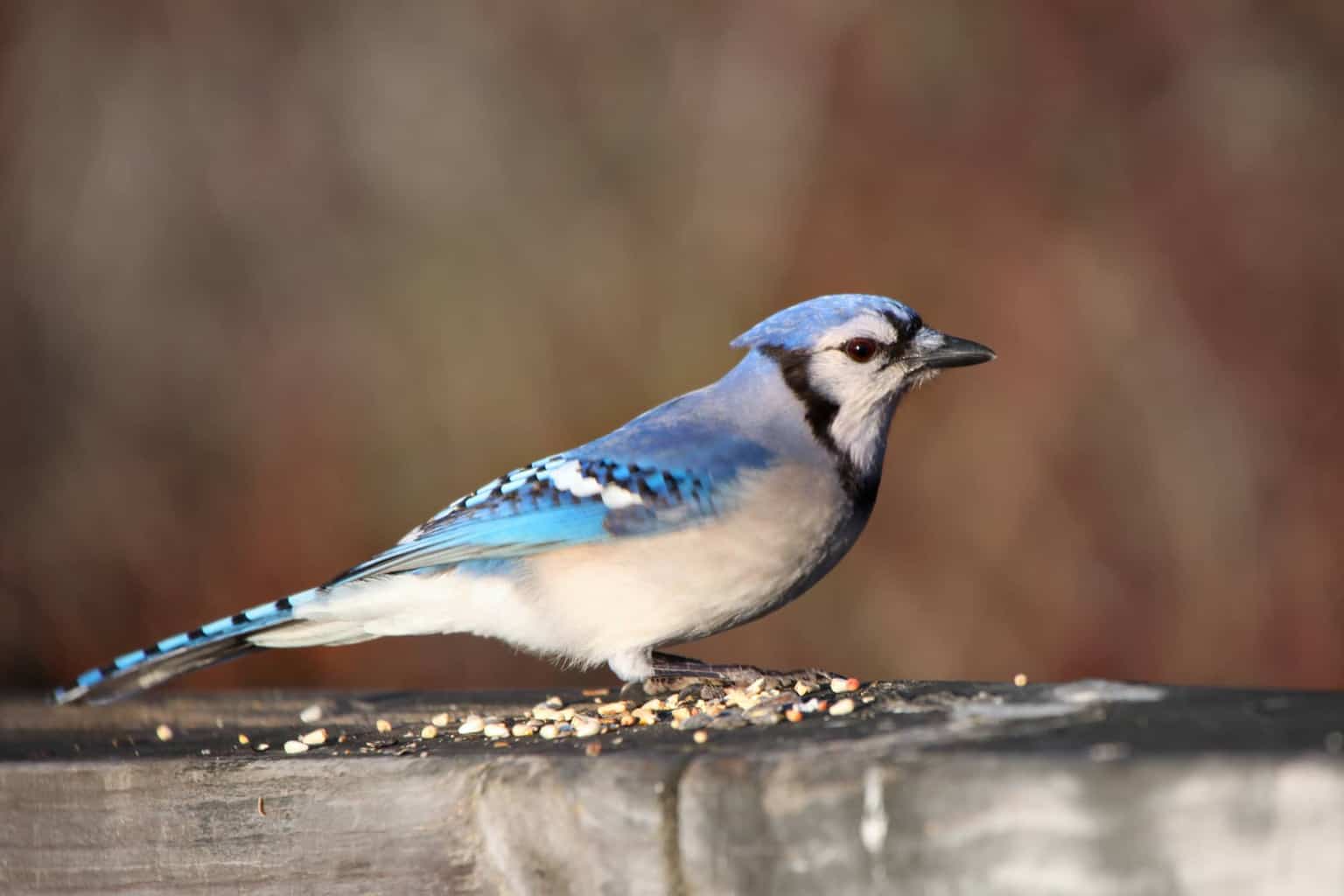
- Scientific Name: Cyanocitta cristata
- Length: 9–12 inches
- Weight: 2.5–3.5 ounces
- Wingspan: 13–17 inches
Blue jays are incredibly common in all the states. They’re pretty easy to find anywhere, and their distinctive shape makes them easily identifiable.
These birds have icy blue plumage with white chests. The males have crests, and they have a black line passing straight through their eyes.
Their wings have patches of white all over, and they look like they have a carreaux, or checkered, pattern.
Blue jays are common feeder birds. You can provide some black oil sunflower seeds and peanuts and wait for them to come by.
Eastern Bluebird

- Scientific Name: Sialia sialis
- Length: 7–8 inches
- Weight: 1–2 ounces
- Wingspan: 11.5–13 inches
Eastern bluebirds look a bit like indigo buntings, but they have peachy fronts. You may mistake them for blue grosbeaks at first glance, but their unique coloration will give them away in an instant.
These colorful birds have blue backs and heads, with peachy fronts and white underbellies. They’re commonly called blue robins and blue redbreasts.
Eastern bluebirds were once Ohio’s most common songbird. Their numbers have seen a considerable decline, but there’s still a substantial population in the Buckeye state.
Blue-Gray Gnatcatcher

- Scientific Name: Polioptila caerulea
- Length: 4–4.3 inches
- Weight: 0.2–0.3 ounces
- Wingspan: 6.3 inches
Blue-gray gnatcatchers belong to both blue and gray color groups. The females are outright gray with pale hints of blue. The blue is pretty hard to spot, though.
On the other hand, the males have pale blue bodies, but it’s a soft shade that resembles the sky on a wintery morning.
Contrary to their names, these birds don’t feed on gnats. They eat seeds and insects, and they stay around deciduous forests for most of their days.
Green Birds in Ohio
Anna’s Hummingbird
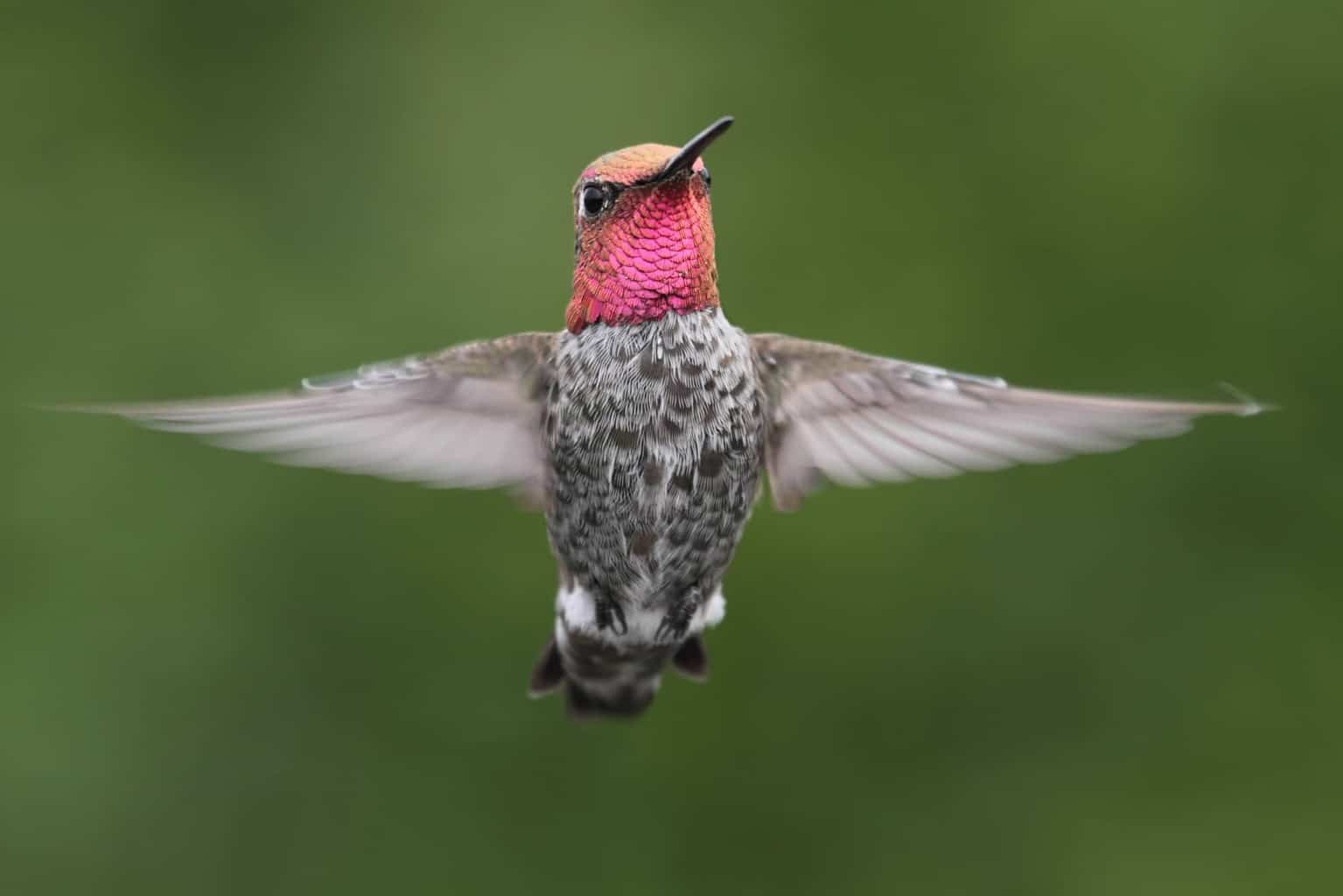
- Scientific Name: Calypte anna
- Length: 3.9–4.3 inches
- Weight: 0.1–0.2 ounces
- Wingspan: 4.7 inches
Anna’s hummingbirds are among the most beautiful bird species you can see in Ohio. They have hot pink heads covered in iridescent feathers that look majestic under the light.
On top of that, the green feathers on their back are iridescent, giving them an overall shiny look in sunlight.
These tiny birds mostly spend their time around blossoms, and they’re frequent hummingbird feeder visitors. However, their sightings are rare in Ohio because they originally belong to the country’s coastal regions.
Calliope’s Hummingbird

- Scientific Name: Selasphorus calliope
- Length: 2.8–3.9 inches
- Weight: 0.071–0.1 ounces
- Wingspan: 4.3 inches
Calliope’s hummingbirds look slightly similar to Anna’s hummingbirds, but you can identify them easily because they only have fuschia throats. Meanwhile, Annas have the color covering their whole heads.
Calliopes are the smallest birds in North America, so you may need to strain your eyes to catch them on a branch. They love staying near alders and willows.
These birds are scarce in Ohio, though. Only a few sightings have been recorded. They spend the winter in Mexico, and some of them cross the border, but they’re not common in the state.
Mexican Violetear
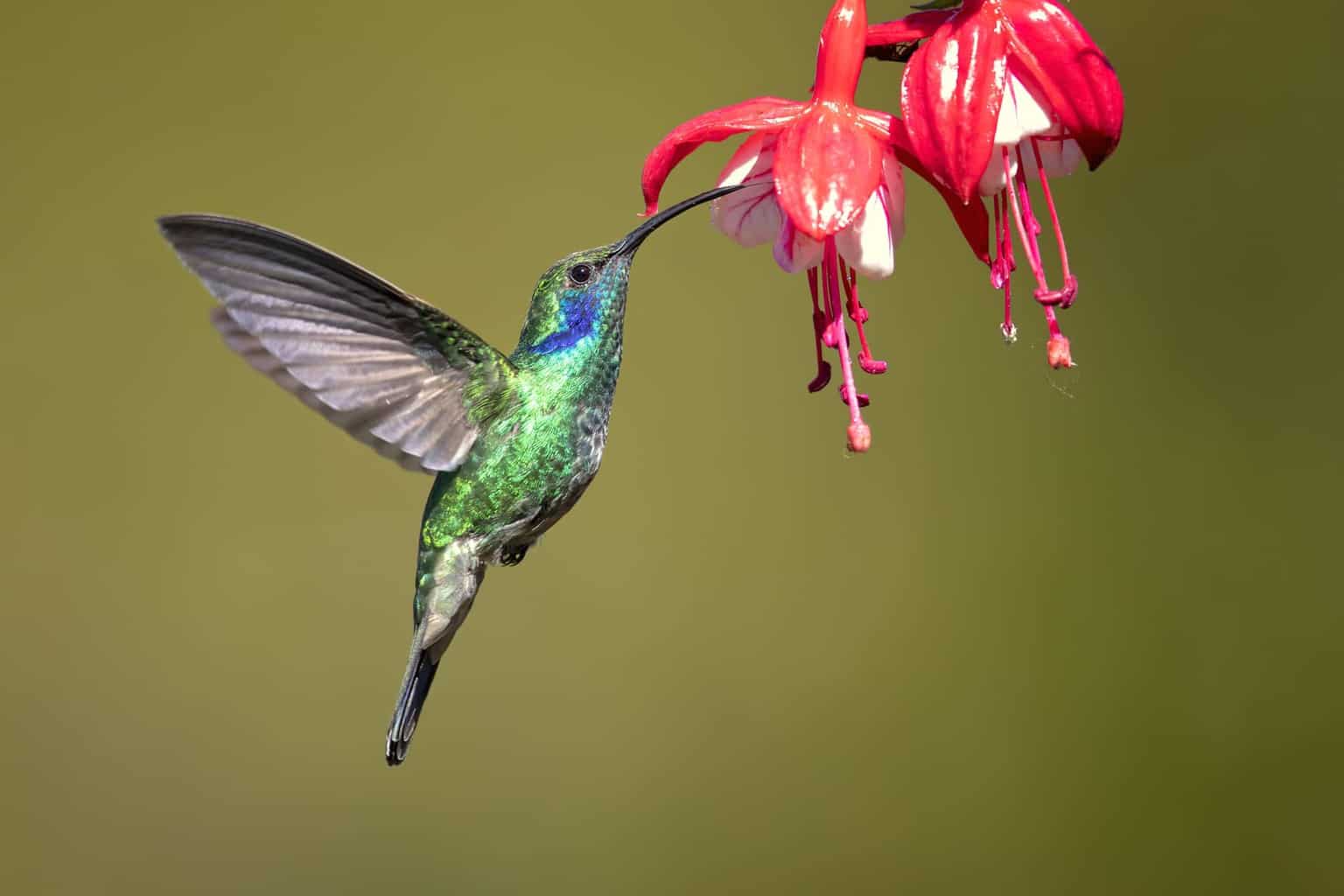
- Scientific Name: Colibri thalassinus
- Length: 3.8–4.7 inches
- Weight: 0.2–0.3 ounces
- Wingspan: 4–5 inches
If you see Mexican violetears in Ohio, you’re a lucky person. These fellas are rare visitors to the state because they don’t breed in it. Despite that, many sightings have been recorded.
Violetears have green plumage and blue necks. Their feathers are iridescent, making them look shiny under direct light.
These birds are nomadic, which means they don’t live in one place. Instead, these migratory birds constantly move from one habitat to another. As a result, they have complex migration patterns, and it’s not easy to track their course.
Orange Birds in Ohio
Allen’s Hummingbird

- Scientific Name: Selasphorus sasin
- Length: 3.5–4.2 inches
- Weight: 0.1–0.2 ounces
- Wingspan: 4.3–4.5 inches
As you’ve probably noticed by now, Ohio has a lot of hummingbirds. Allen’s hummingbirds aren’t common because the state isn’t their home, but they aren’t rare either.
They have orange fronts and wings, but their backs have streaks of an iridescent green color all over. Their bodies are too small, but their bills are long, making them look unique among other birds.
These birds are native to Coastal California, and they love staying near marshes and water areas.
Rufous Hummingbird

- Scientific Name: Selasphorus Rufus
- Length: 2.8–3.5 inches
- Weight: 0.071–0.176 ounces
- Wingspan: 4.3–4.5 inches
Rufous hummingbirds are among the smallest birds in the world. The only thing that makes them easily identifiable is their bright orange color. Other than that, their small size makes them hard to spot.
They have long, slender bills. And despite their small size, they can fly more than 2000 miles on their migration course. Of course, that’s an exceptional distance, especially among hummingbirds.
Rufous hummingbirds mainly feed on nectar, and they eat quite a lot because of their high metabolism. So, you’ll frequently see them around flowery areas and blossoms.
Baltimore Oriole
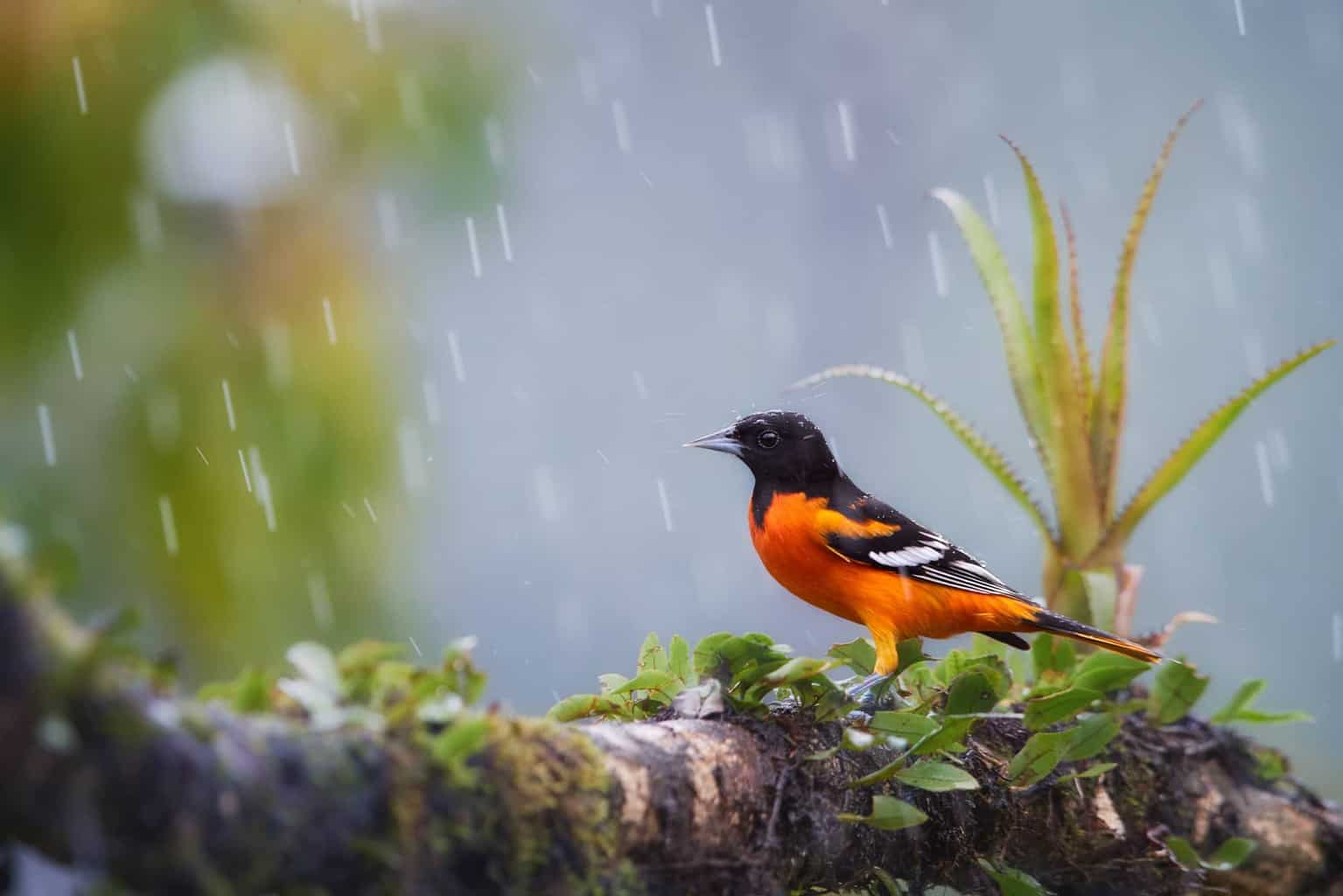
- Scientific Name: Icterus galbula
- Length: 6.6–7.5 inches
- Weight: 1–1.4 ounces
- Wingspan: 9–11.8 inches
Baltimore Orioles have unique coloration, consisting only of orange and black. That’s probably why the baseball team chose the bird as their logo—because the colors catch the eye a mile away.
Baltimore orioles have black backs and heads, with the rest of their bodies entirely orange.
They’re ubiquitous in Ohio, and most of them stay in the state for the whole summer. The females will start to leave by August, while the males will remain until September.
Ruddy Duck
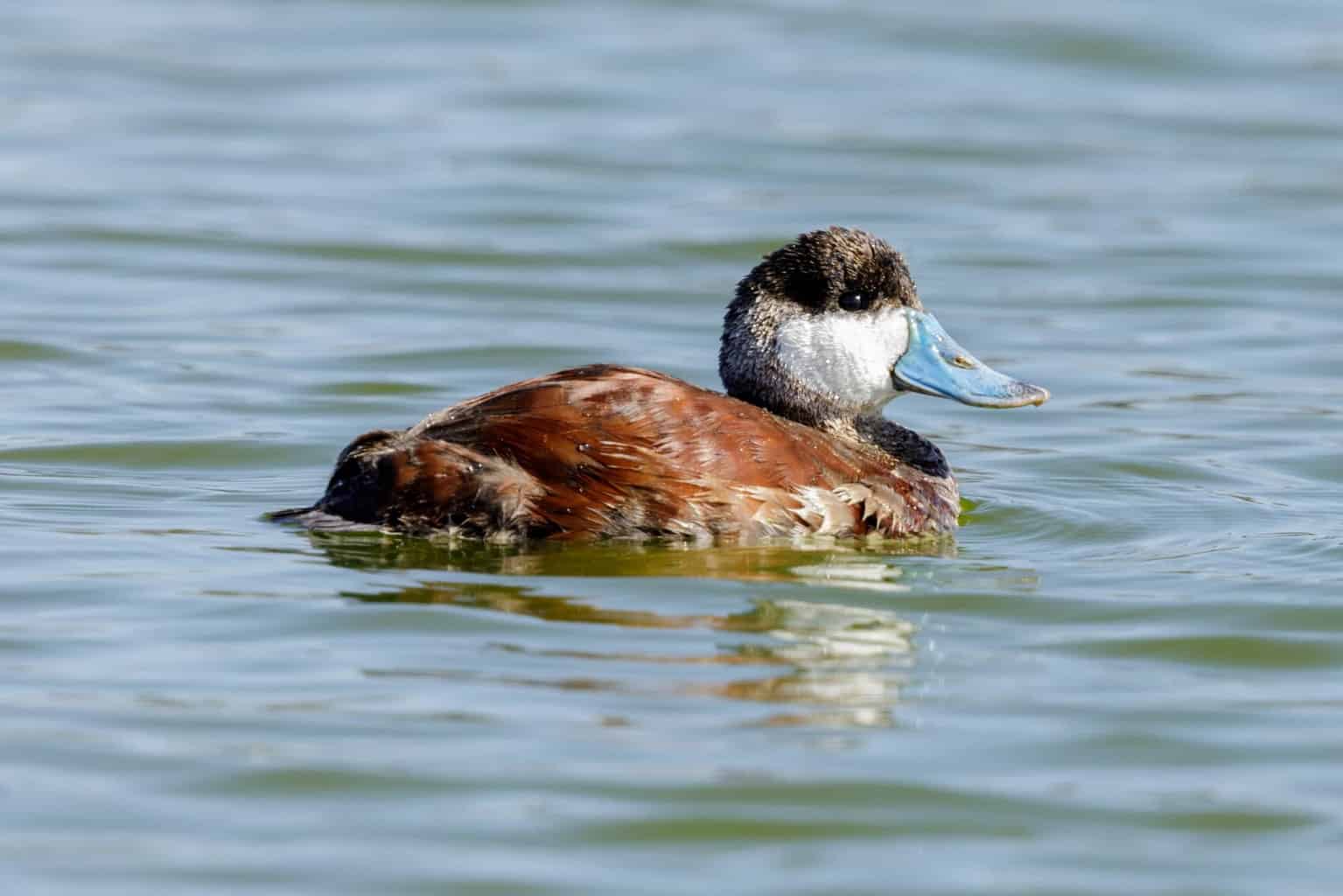
- Scientific Name: Oxyura jamaicensis
- Length: 13.5–17 inches
- Weight: 1–1.5 pounds
- Wingspan: 18.5–19.5 inches
Ruddy ducks are among the most common birds of Ohio. Their unique coloration earned them a lot of fans.
They have deep orange backs, brown fronts, and black heads. However, their pale blue bill stands out the most because it goes against their whole coloration.
These ducks mainly live in Lake Erie, so your chances of seeing them there are high. They’re rare breeders in the area, but you may get lucky and see their strutting breeding movements. In the winter, they mostly walk in pairs.
Yellow Birds in Ohio
American Goldfinch
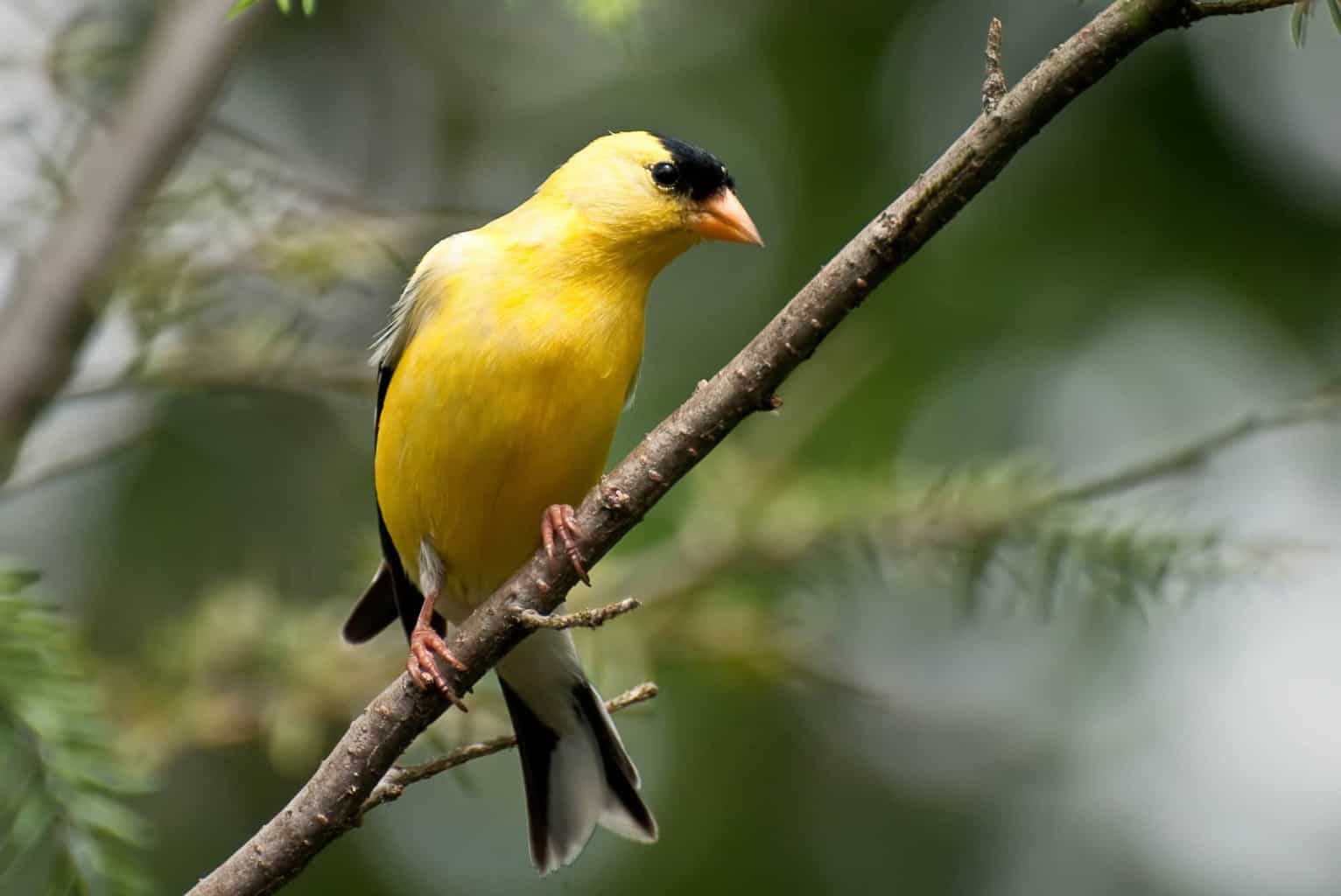
- Scientific Name: Spinus tristis
- Length: 4.3–5.5 inches
- Weight: 0.39–0.71 ounces
- Wingspan: 7.5–8.7 inches
American goldfinches are the yellow version of Baltimore orioles. They, too, have bodies consisting of only two colors: lemon yellow and black.
They have black wings and a black forehead, with yellow dominating the rest of the coloration. Both genders have yellow bodies, but females are on the paler side.
These birds are widespread in Ohio, existing in every topography in the state all year long. They’re known for their attractive flying movements, bouncing up and down with their wings spread behind them.
Yellow-Throated Vireo
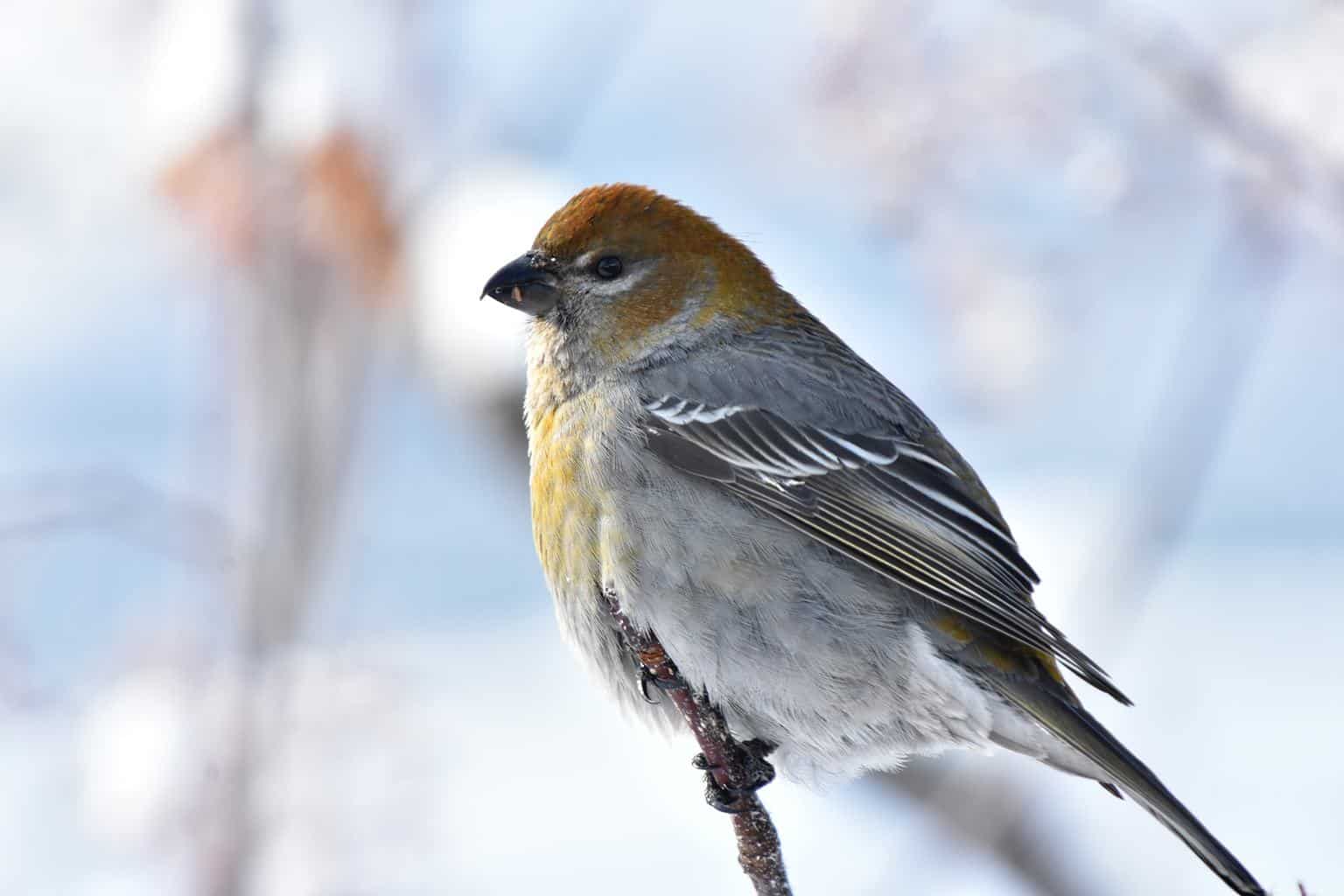
- Scientific Name: Vireo flavifrons
- Length: 5.1–5.9 inches
- Weight: 0.5–0.7 ounces
- Wingspan: 9.1–9.5 inches
Yellow-throated vireos have yellow upper bodies, and the rest of their feathers are a mix of white and gray. Their eyes are black and round, and their bills are small.
These fellows are on the smaller side of the scale. They’re close to the size of black-capped chickadees, but they’re a bit larger.
Vireos breed in deciduous forests and forest edges. You’ll mostly find them near tall oaks, and you may see them along water streams.
Yellow Warbler

- Scientific Name: Setophaga petechia
- Length: 4.7–5.2 inches
- Weight: 0.3–0.5 ounces
- Wingspan: 6.3–7.9 inches
The yellow warbler bird belongs to the Warbler family, which consists mainly of small songbirds. The bird is native to Northern America, but it occasionally visits the South as well.
Yellow warblers have entirely yellow bodies, making them look like literal balls of sunshine. Their wings have streaks of gray and white, and their fronts have streaks of pale brown that blend seamlessly against the yellow.
These fellas mostly forage on the ground, looking for worms to pull out and eat. They feed mainly on insects and worms they find along their way.
Hooded Warbler
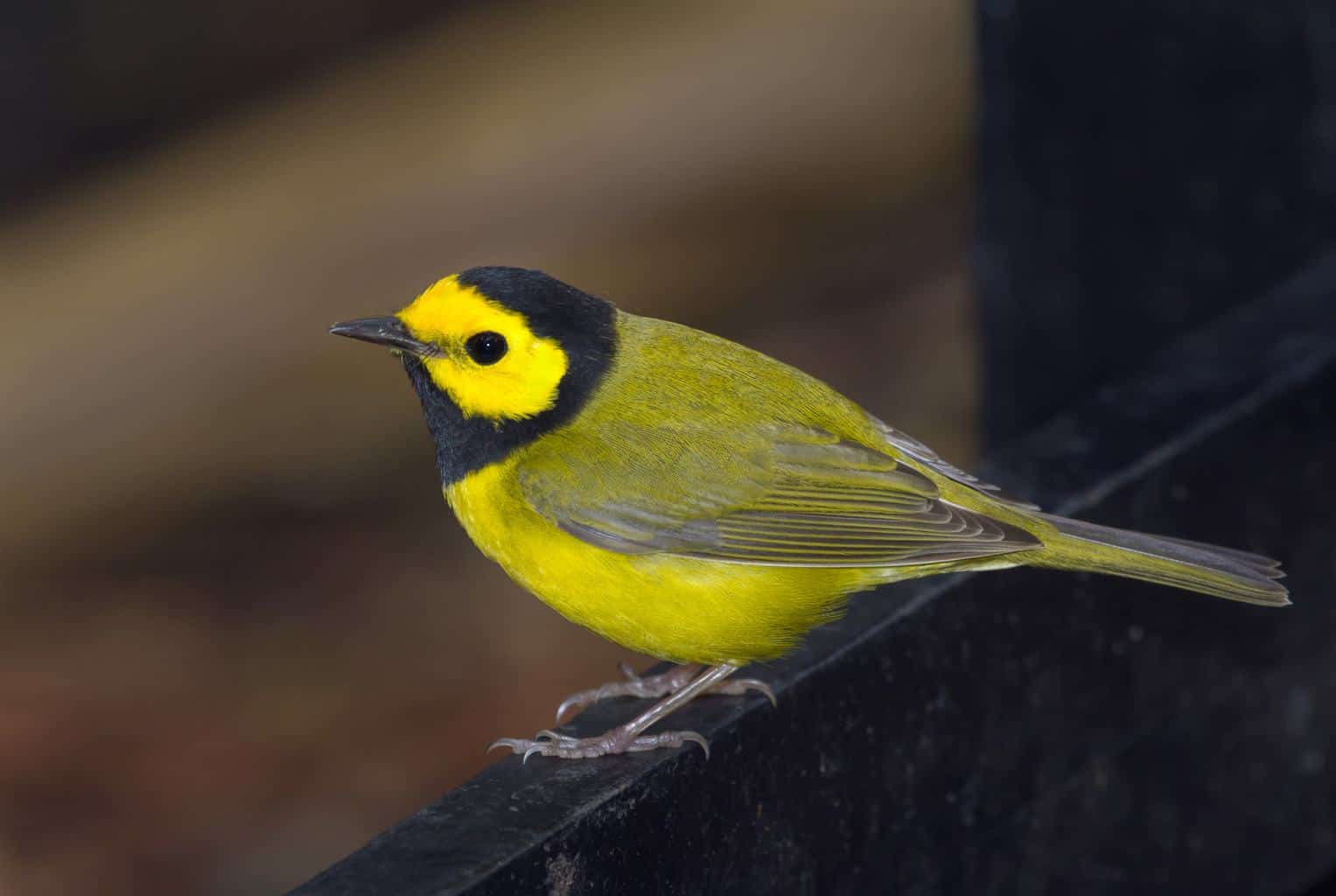
- Scientific Name: Setophaga citrina
- Length: 5–5.2 inches
- Weight: 0.2–0.5 ounces
- Wingspan: 6.9–7.1 inches
Hooded warblers belong to the New World Warblers family. They stand out vividly among the other members, thanks to the eccentric color distribution along their bodies.
These champions have a patch of black around their heads, making them look like they’re wearing real hoods. The rest of their bodies are a bright yellow color.
You can find hooded warblers in thick vegetation, where they feed on insects and seeds. They also occasionally stay in deciduous forests.
Yellow-Breasted Chat
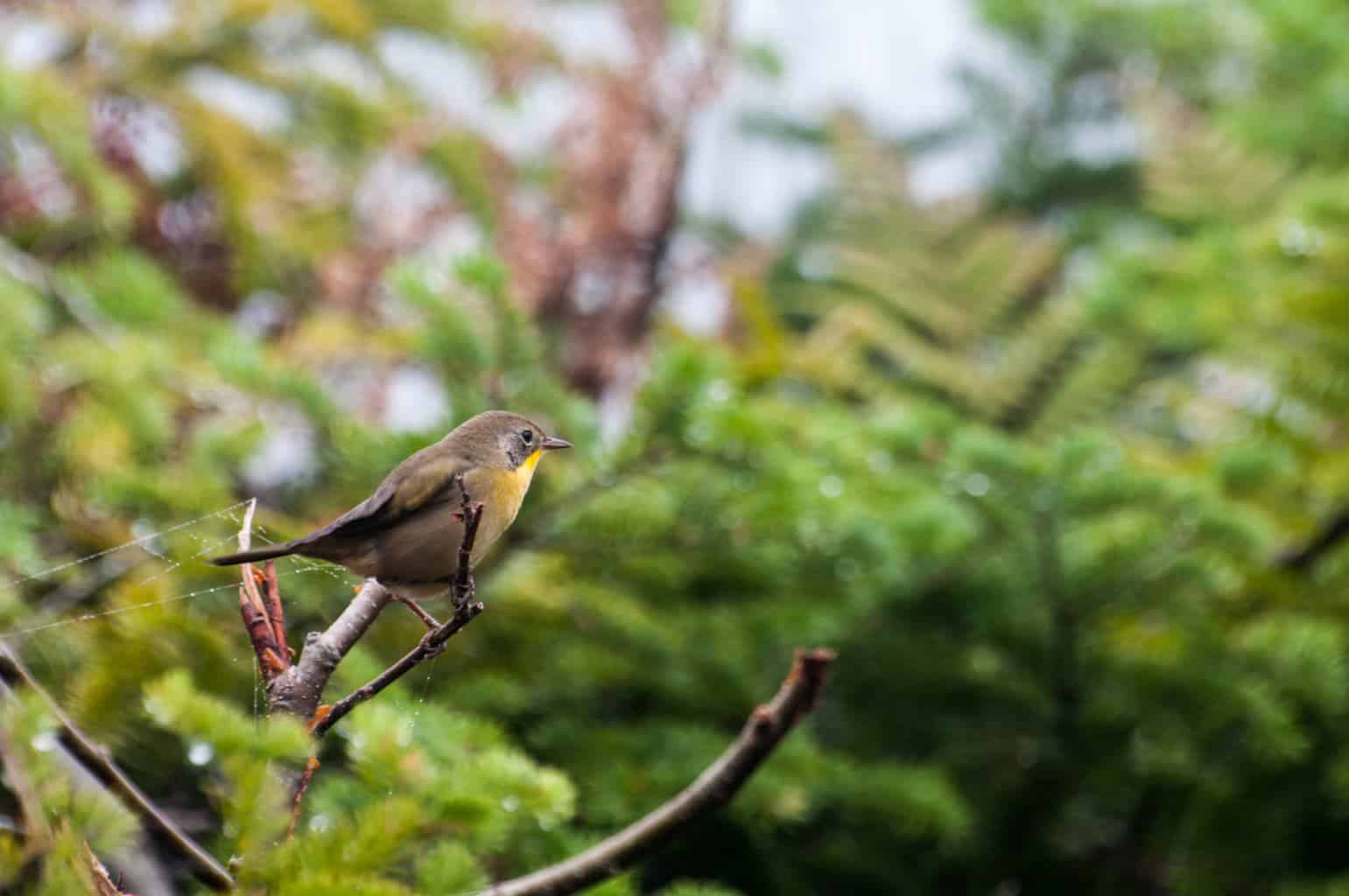
- Scientific Name: Icteria virens
- Length: 7–7.2 inches
- Weight: 0.9–1.1 ounces
- Wingspan: 9.8–10 inches
Many experts believe yellow-breasted chats belong to the New World Warblers family. However, the claim has a lot of opposition because the birds are different from other family members.
Even if they don’t belong to the same family, we know one thing for sure: they’re as yellow as they come.
You can find yellow-breasted chats around dense foliage and regrowing gardens. Like most birds their size, they mainly feed on insects and seeds.
Other Birds To Watch For in Ohio
Mourning Dove

- Scientific Name: Zenaida macroura
- Length: 11–12 inches
- Weight: 4–6 ounces
- Wingspan: 17–17.7 inches
If you have a platform feeder, there’s a high chance you’ll catch a couple of mourning doves feeding on it. They’re frequent backyard visitors, and they’re a common bird in most states.
They prefer staying in open areas, so you likely won’t see them coming near a closed feeder. Instead, they’ll go for platforms and open feeders.
The doves have tan plumage with dark spots all over the wings. They spend most of their time foraging on the ground for food or perching on top of telephone lines.
Downy Woodpecker

- Scientific Name: Dryobates pubescens
- Length: 5.5–7 inches
- Weight: 0.7–1 ounce
- Wingspan: 10–11.8 inches
Downy woodpeckers are the smallest woodpecker species in North America. Both genders look similar, except the males have red patches on top of their heads.
Downy woodpeckers have some regional differences, though. The birds that live in the west have darker coloration than those in the east, but they look similar nevertheless.
These birds are territorial, and they rarely leave one habitat for another. Their diet consists of seeds, dried fruits, insects, and nuts.
European Starling

- Scientific Name: Sturnus vulgaris
- Length: 8–9 inches
- Weight: 2–3.5 ounces
- Wingspan: 12–16 inches
European starlings have an exquisite blend of colors. Are they blue? Or are they purple?
They may be both, and some birds have neither. Their upperparts and wings have blue-black feathers and they are iridescent, so you’ll need to see them under direct sunlight to identify their colors.
Nevertheless, this invasive species is among the most beautiful birds you can see in Ohio.
European starlings mostly stay around city streets, parks, and fields. You’ll commonly see them on the ground, digging for worms.
Black-Capped Chickadee

- Scientific Name: Poecile atricapillus
- Length: 4.7–5.9 inches
- Weight: 0.3–0.5 ounces
- Wingspan: 6.3–8.3 inches
Black-capped chickadees have funny looks, mainly because of their round, chunky bodies. They have black heads, and their bodies are a blend of black, white, and gray.
Their eyes are small and black so you won’t see them from the sea of black around them.
Black-capped chickadees aren’t frequent backyard birds. You may encounter the occasional bird passing by. However, they spend most of their time around shrubby woods and residential areas.
Wrap Up
Ohio has 400 additional birds aside from this list to test your bird-spotting skills. You should see at least 10–15 common species if you’re visiting or living in the state.
This list should help you identify Ohio birds with different colors. As long as you have a hat on your head and a pair of binoculars in your hands, it should be easy to identify any bird passing by!

